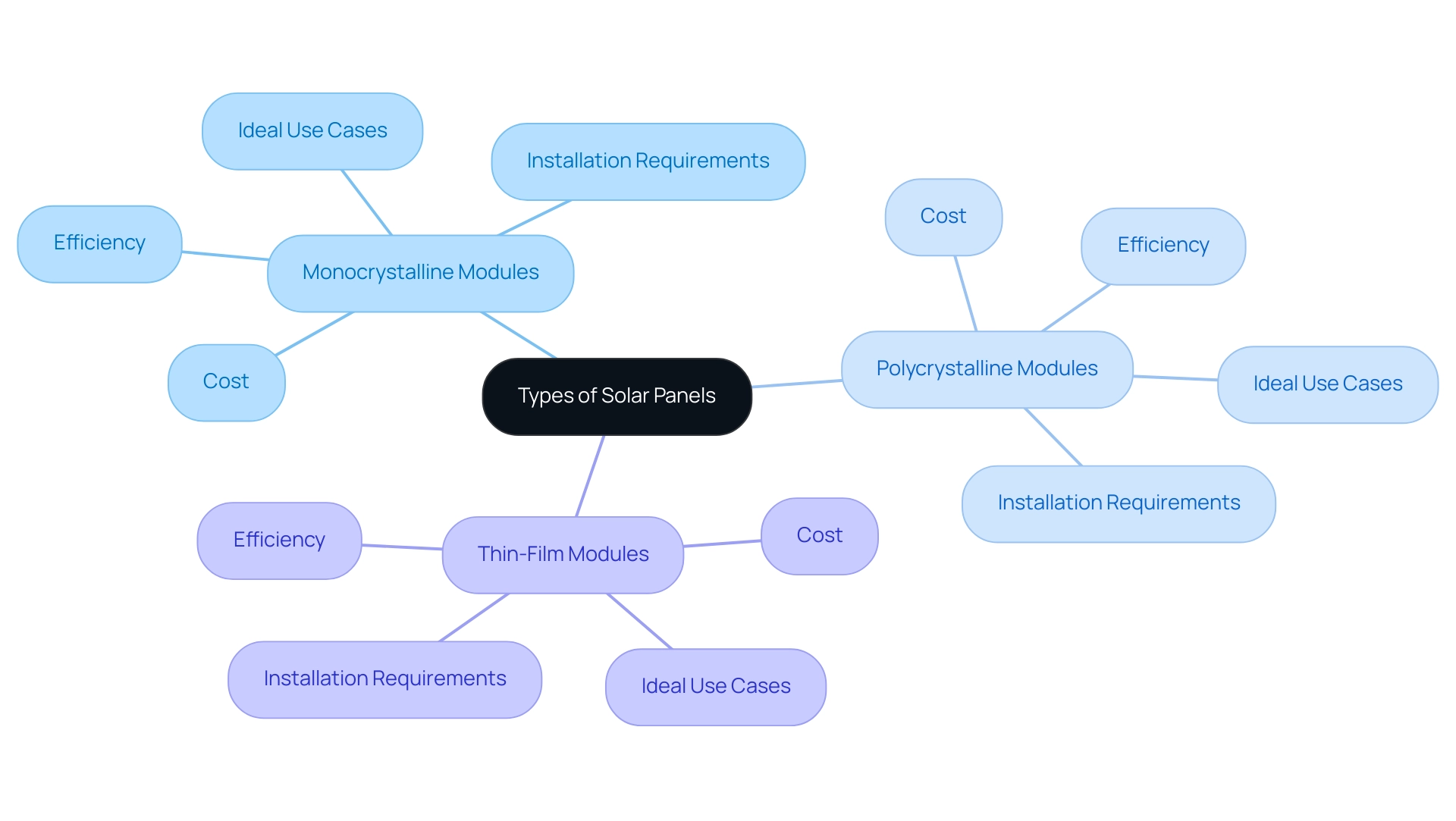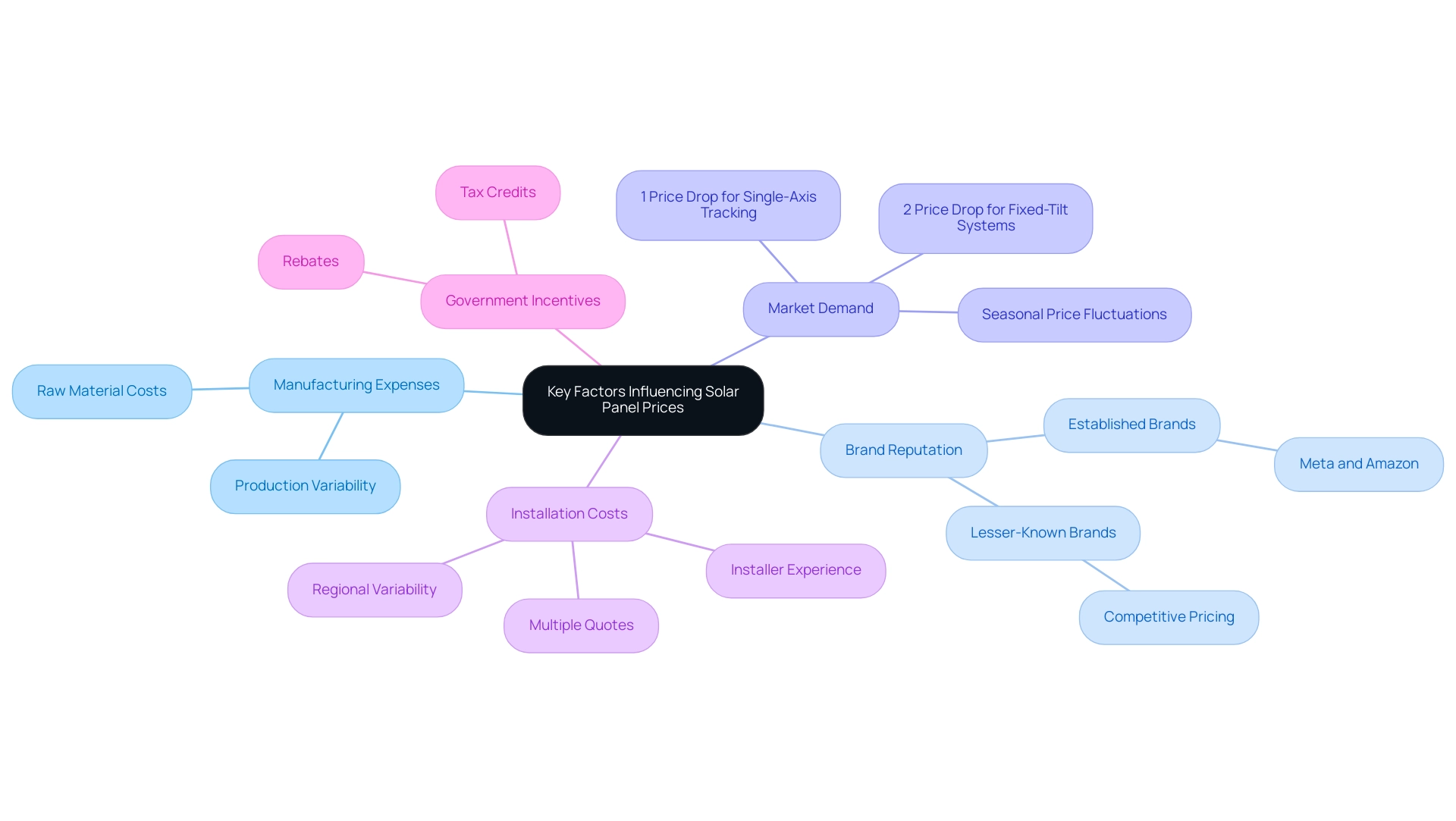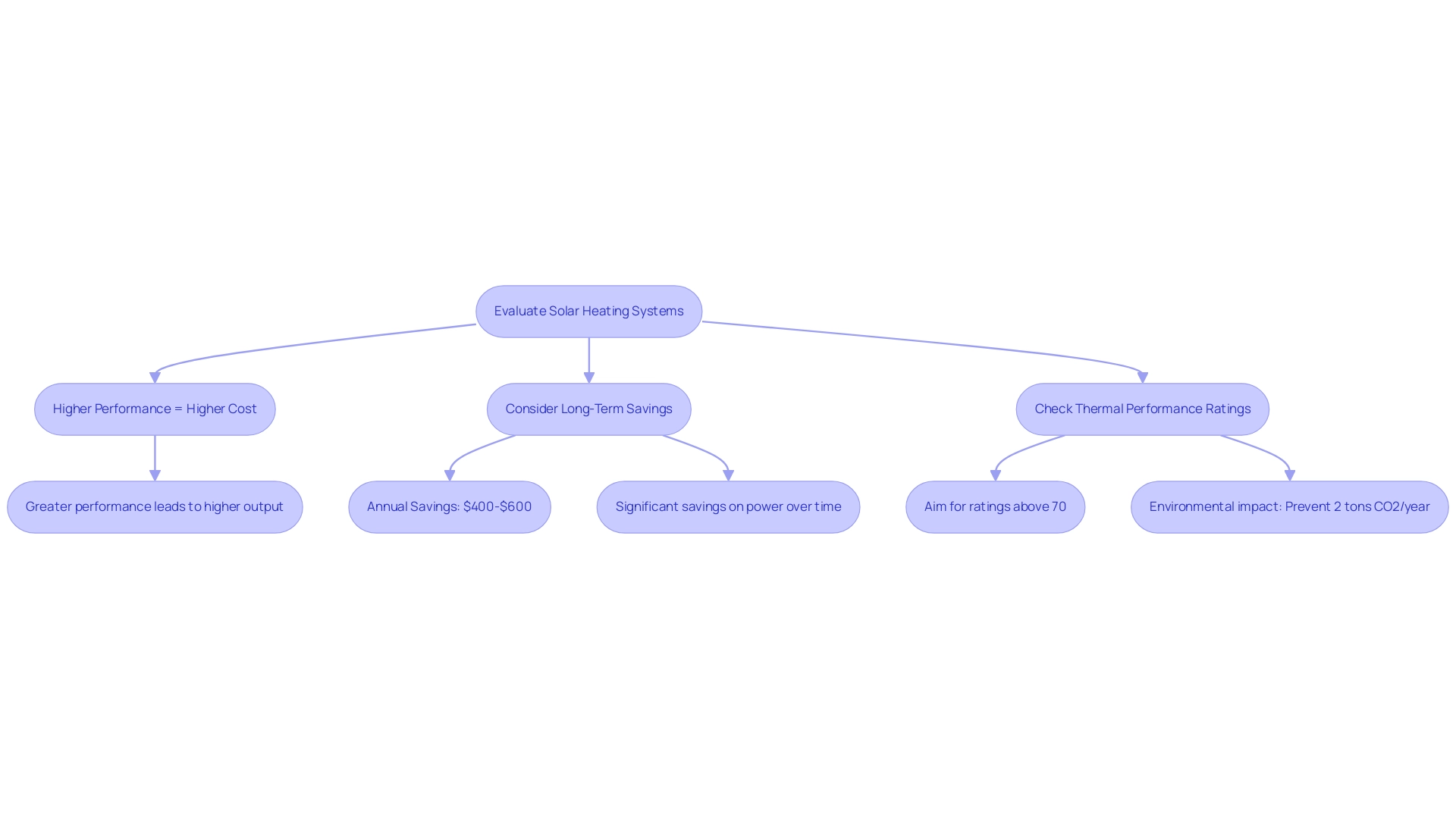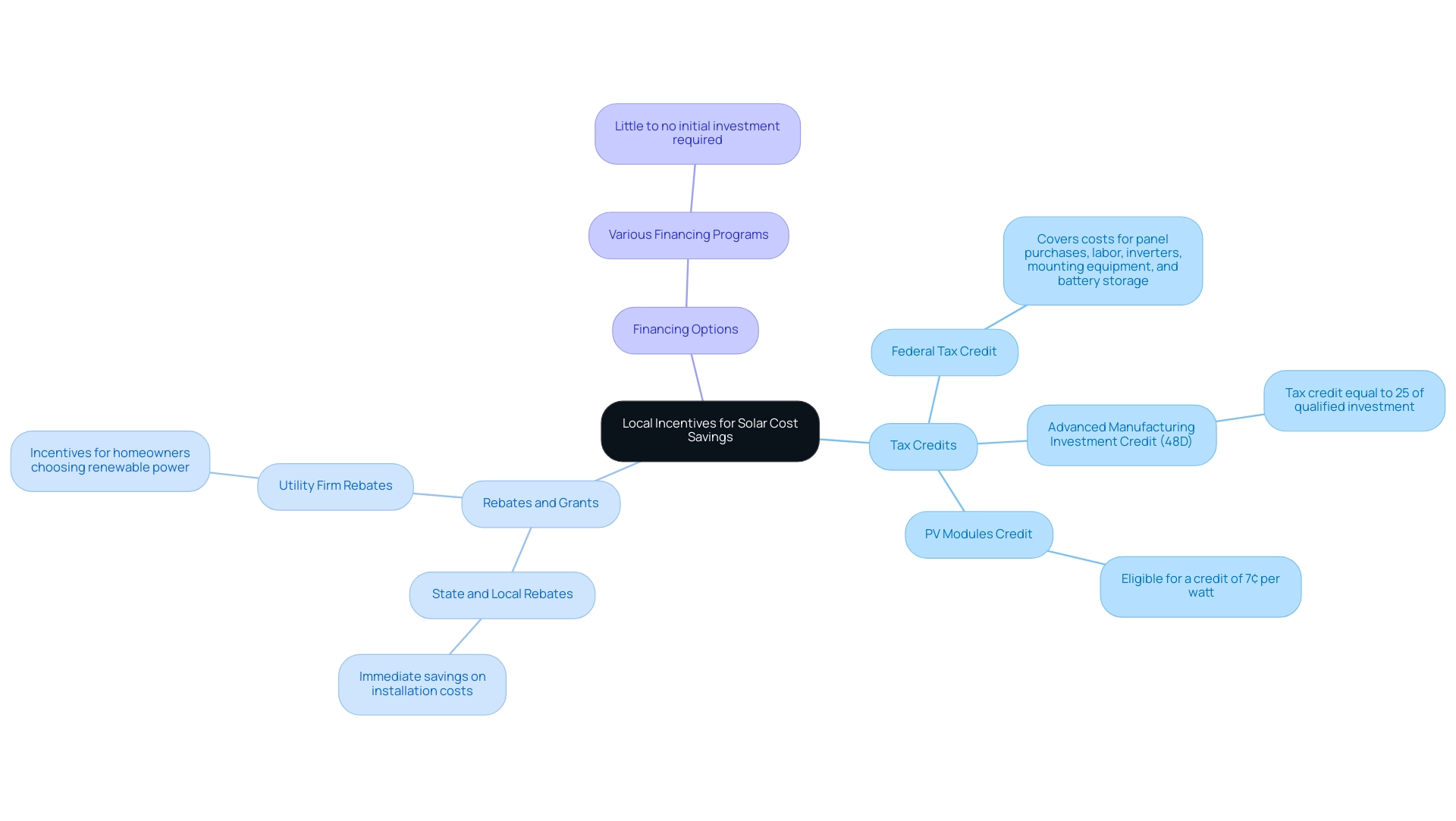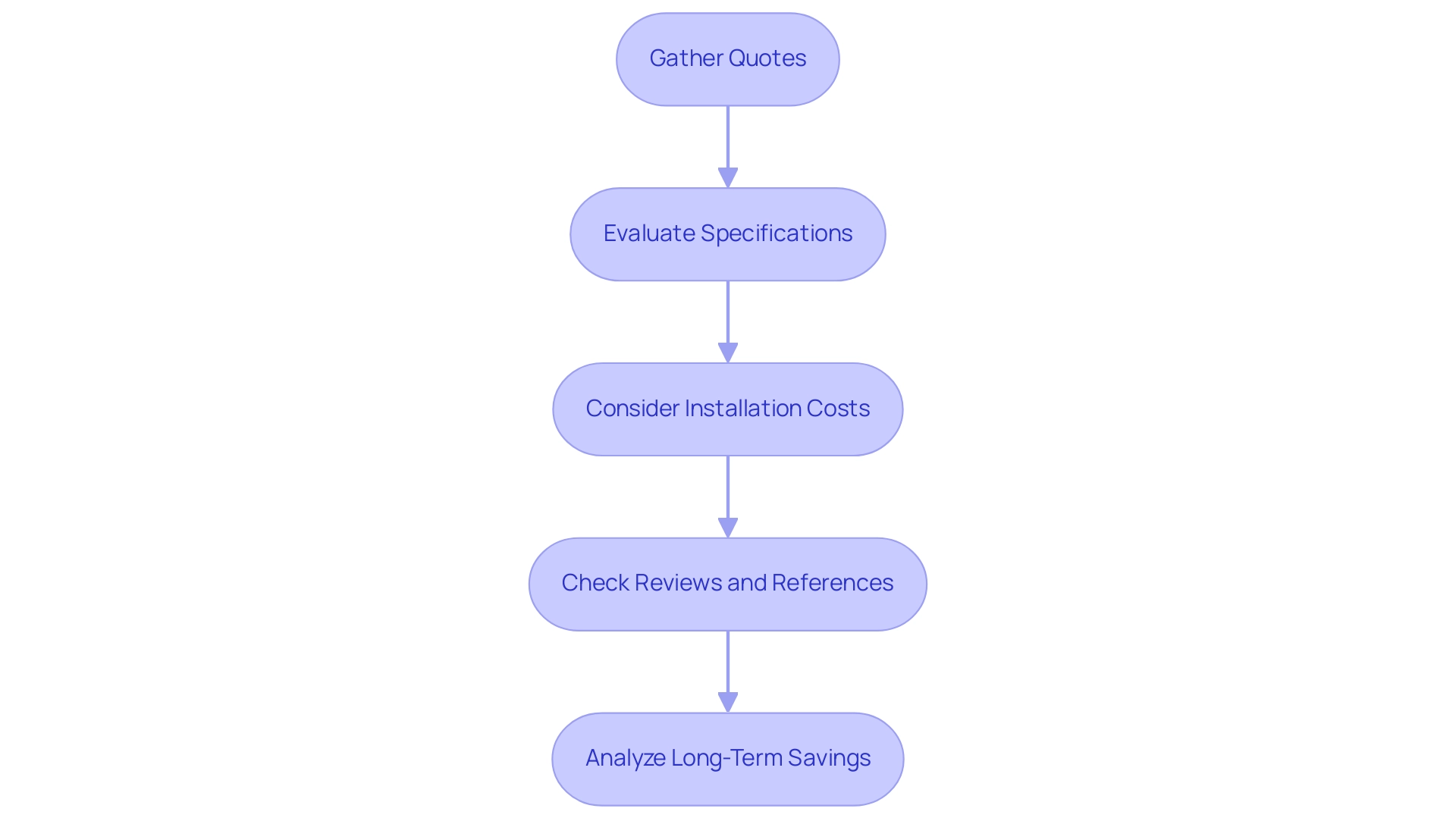Overview
To conduct a solar panel price comparison effectively, homeowners should gather detailed quotes from multiple suppliers, evaluate the specifications and efficiency ratings of different panels, and consider installation costs and long-term savings potential. The article emphasizes that understanding various factors—such as manufacturing expenses, brand reputation, and local incentives—can significantly influence pricing and help consumers make informed decisions in their transition to renewable energy.
Introduction
As homeowners increasingly seek sustainable solutions to reduce energy costs and environmental impact, the world of solar energy offers an array of options that can seem overwhelming. From understanding the different types of solar panels—monocrystalline, polycrystalline, and thin-film—to navigating the intricacies of pricing influenced by manufacturing costs, brand reputation, and installation expenses, making the right choice is crucial.
This article delves into the essential factors to consider when exploring solar energy for your home, including:
- The importance of efficiency
- Local incentives
- Tips for effectively comparing prices
By arming yourself with knowledge, you can confidently embark on the journey toward a greener, more cost-effective energy future.
Understanding Different Types of Solar Panels
When assessing solar systems, understanding the three primary types can guide you in making a well-informed decision:
- Monocrystalline Modules: Renowned for their high efficiency and elegant design, monocrystalline modules are crafted from single-crystal silicon. Although they come at a higher price point, a solar panel price comparison reveals that their superior performance makes them ideal for homeowners with limited roof space. They’re particularly effective in maximizing energy output in small areas, which can significantly reduce utility costs, enhance energy independence, and promote sustainability.
- Polycrystalline Modules: These structures are formed from multiple silicon crystals, making them a more budget-friendly option compared to monocrystalline. While they are less efficient, their affordability is an appealing option for those with ample roof space who want to optimize their energy investment by conducting a solar panel price comparison. As the demand for sustainable energy solutions grows, polycrystalline modules provide an accessible entry point into solar energy.
- Thin-Film Modules: Lightweight and flexible, thin-film modules can be installed on a variety of unconventional surfaces. However, they tend to have lower performance and may require more installation space compared to the other types. They can be especially beneficial in situations where conventional systems are not practical, addressing various homeowner requirements.
Along with choosing the right kind of photovoltaic module, evaluating the suitable battery options is essential for efficient power storage. Choices such as lithium-ion batteries provide great performance and durability, enhancing energy systems by retaining surplus power for utilization during non-sunny times. Moreover, optimal methods for choosing panel inverters include confirming compatibility with your system’s specifications and taking into account features such as monitoring capabilities and warranties.
As the industry develops, recent innovations in technology and AI are enhancing performance and lowering costs, which is evident in solar panel price comparison, making renewable power more attainable than ever. Notably, companies like Amazon, Google, and Meta showcase significant corporate interest in renewable energy, reflecting a growing adoption of sustainable solutions. However, the industry does face challenges such as equipment shortages and political uncertainties that may affect growth.
It is also important to consider the impact of California’s building codes on energy installations, as these regulations can affect system design and performance. According to Piotr Bojek, lead author of an IEA Special Report,
By the end of this decade, photovoltaic technology is set to become the largest renewable source, surpassing both wind and hydropower.
Ongoing R&D efforts in photovoltaic technology are essential for improving efficiency and reducing costs, underscoring the importance of staying informed about the evolving landscape.
Grasping these differences and market dynamics will enable you to select a solution that aligns with your power requirements and financial strategies while also taking into account the environmental effects of heating systems.
Key Factors Influencing Solar Panel Prices
When it involves the pricing of photovoltaic systems, several key elements play an important role for eco-conscious homeowners contemplating a transition to renewable power:
- Manufacturing Expenses: The costs related to raw materials and production can vary, affecting the final price of photovoltaic systems and possibly your total savings on utility bills. Understanding these costs, particularly in the context of solar panel price comparison, can help you make a more informed decision about your investment.
- Brand Reputation: Well-established brands, like those favored by major corporations such as Meta and Amazon, often command a premium for their products due to their proven reliability and performance. For instance, major U.S. corporations have procured nearly 40 GW of photovoltaic capacity and over 1.8 GWh of battery storage by Q1 2024, indicating a strong trend toward corporate investment in renewable energy. However, don’t overlook lesser-known brands that may provide competitive pricing without sacrificing quality—this could be a wise option for your home.
- Market Demand: Just like any other product, conducting a solar panel price comparison can reveal how photovoltaic prices fluctuate with seasonal demand. For example, utility-scale system pricing is down 2% for fixed-tilt and 1% for single-axis tracking year-over-year, reflecting current market trends. Keeping an eye on these trends, such as solar panel price comparison, can help you time your purchase effectively, potentially saving you money.
- Installation Costs: Installation is another significant factor that can vary widely based on your region and the experience of the installer. Always ask for quotes from multiple installers to gain a comprehensive understanding of your total investment. Remember, the best energy solutions include a solar panel price comparison that combines quality panels with expert installation.
In addition to these factors, it’s essential to consider the costs associated with Level 2 home chargers, which typically range from $500 to $1,500 for the unit alone, not including installation fees that can vary based on your local market. This investment can greatly improve your home’s energy performance, particularly when combined with renewable energy sources. Furthermore, when assessing your energy choices, a thorough solar panel price comparison indicates that while such sources can result in considerable long-term savings, conventional electricity might entail lower initial costs.
However, government programs and incentives, such as tax credits and rebates, can help offset the initial investment in renewable technology, making it a more viable option for many homeowners.
As the renewable energy market evolves, with projections from SEIA stating that 450 GW of new capacity will be installed over the next decade, understanding solar panel price comparison will empower you to make the best choices for your home.
The Role of Efficiency in Solar Panel Pricing
When assessing heating systems powered by the sun, effectiveness is a vital element that directly affects costs and long-term savings. Here’s what you need to understand:
- Greater Performance Equals Higher Cost: Generally, systems with superior thermal performance ratings have a higher initial price due to their capability to convert more sunlight into usable heat, resulting in increased output. For example, high-performance water heating systems can save homeowners between $400 to $600 each year on utility costs, demonstrating the concrete advantages of investing in superior performance alternatives.
- Long-Term Savings: Although the upfront expenditure may appear considerable, choosing high-performance heating systems can lead to significant savings on power over time. This makes them an intelligent option for lowering utility costs over time.
- Thermal Performance Ratings: Aim for heating systems that boast thermal performance ratings above 70%. The greater the rating, the more warmth they can capture from accessible sunlight, which is especially advantageous for those with restricted space.
Comprehending the efficiency of the heating systems you’re evaluating aids in determining whether their cost corresponds to the possible savings they guarantee. Furthermore, the environmental impact of these systems is significant; for example, utilizing thermal energy from the sun can prevent 2 tons of carbon dioxide from entering the atmosphere each year, contributing to a healthier planet. Investing in a high-efficiency heating solution isn’t just an eco-friendly choice; it’s a financially sound one that promotes sustainability and reduces reliance on conventional energy sources.
Leveraging Local Incentives for Cost Savings
Local incentives can significantly impact the solar panel price comparison, leading to lower costs for photovoltaic panels and improving your home’s sustainability. Here’s how you can tap into these opportunities to save money and protect the environment:
-
Federal and State Tax Credits: Start exploring the valuable tax credits available to you. For instance, the federal tax credit for renewable energy allows you to deduct a significant percentage of your system’s cost from your federal taxes, potentially saving you a substantial amount.
The Advanced Manufacturing Investment Credit (48D) adds even more appeal by providing a tax credit equal to 25% of your qualified investment, making renewable energy investments financially attractive and eco-friendly.
-
Rebates and Grants: Don’t overlook state or local rebates that offer immediate savings on installation costs. Numerous utility firms are also participating, offering rebates to homeowners who choose renewable power, which can further alleviate your financial strain. The federal tax credit for renewable energy also encompasses various expenses related to panel purchases, labor, inverters, mounting equipment, and battery storage, which can help in making a solar panel price comparison for understanding potential savings.
-
Financing Options: If upfront costs are a concern, there are various financing programs available to assist you in installing renewable energy systems, which can be evaluated through solar panel price comparison with little to no initial investment. This makes sunlight power more attainable than ever!
By investigating these incentives and fully utilizing them, you can turn your sunlight investment into not only a benefit for the planet but also an enhancement for your finances! Additionally, the Inflation Reduction Act has resulted in significant claims for residential clean technology investments, with over $6 billion claimed, showcasing the effectiveness and popularity of these incentives among homeowners. For Long Beach tenants, think about how our offerings, including renewable system installation and roofing upgrades, can assist you in optimizing these incentives while improving your home’s power usage.
Explore our offerings today to see how we can assist you in making a sustainable choice for your home!
How to Effectively Compare Solar Panel Prices
To make the most informed choice when evaluating prices of photovoltaic systems, particularly considering the increasing interest in sustainable power, follow these straightforward steps:
- Gather Quotes: Start by reaching out to multiple suppliers. It’s essential to obtain detailed quotes that break down costs clearly for a solar panel price comparison, including equipment, installation, and any applicable incentives like local rebates. Remember, the average cost per watt for a 12 kW system is around $2.65, so use this as a benchmark in your evaluations. Be aware that financing costs and complicated permitting processes can also impact your overall expenses, so when conducting a solar panel price comparison, ask suppliers how they address these challenges.
- Evaluate Specifications: Don’t just focus on the price tag. Dive into the specifications! Compare efficiency ratings, warranties, and the varieties of photovoltaic systems being offered, including options for integrated battery storage. Comprehending how photovoltaic panels transform sunlight into electricity and the function of inverters in this process can greatly influence your overall satisfaction and power output. Additionally, consider the best batteries available, as they can enhance your energy storage capabilities and ensure you have power when the sun isn’t shining.
- Consider Installation Costs: Installation costs can vary widely among providers, so make sure you request a comprehensive quote that includes all associated fees. A smooth installation process can set the tone for your energy experience, making it crucial to choose a reputable installer.
- Check Reviews and References: Reputation matters. Take the time to read reviews and ask for references from suppliers. A reliable installer can make a remarkable difference in your journey towards harnessing energy from the sun.
- Analyze Long-Term Savings: Look beyond the initial investment. Consider the long-term savings potential of each option based on efficiency, local incentives like statewide tax credits, energy storage rebates, and conduct a solar panel price comparison. This viewpoint will assist you in grasping the overall expense of ownership as time progresses, resulting in a more advantageous investment in sustainable energy.
By adhering to these steps, you’ll be on the right path to making a well-informed choice regarding your renewable energy system acquisition. And remember, tools like the Department of Energy’s SolarApp+ are designed to streamline the interconnection process, making your journey easier and more cost-effective. With optimism increasing in the renewable energy market, especially for 2024, where 54% of installers anticipate selling more systems, now is a great time to explore your options!
Additionally, consider the benefits of Tesla home chargers and the importance of regular solar panel cleaning to maintain efficiency.
Conclusion
Exploring solar energy for your home is an empowering journey toward sustainability and cost savings. By understanding the different types of solar panels—monocrystalline, polycrystalline, and thin-film—homeowners can make informed choices that align with their specific needs and budget. Each type offers unique advantages, whether it’s maximizing efficiency in limited spaces or providing a more affordable option for larger installations.
Pricing considerations are equally important. Factors such as:
- manufacturing costs
- brand reputation
- market demand
- installation expenses
all play a crucial role in determining the overall investment. By keeping an eye on these elements and leveraging local incentives like tax credits and rebates, homeowners can significantly reduce their upfront costs and enhance their financial returns over time.
Efficiency in solar systems is not just about immediate savings but also long-term benefits. Higher efficiency systems may come with a higher price tag, but they can lead to substantial energy savings and a lower carbon footprint. Understanding the balance between upfront costs and long-term gains is essential for making a sound investment.
As the solar market continues to evolve, staying informed about technological advancements and market dynamics will empower homeowners to choose the best solar solutions for their energy needs. With the right knowledge and resources, embracing solar energy isn’t just a step toward a greener future; it’s a smart financial decision that benefits both the homeowner and the environment. The time to explore solar options is now, and the path to a sustainable, cost-effective energy future is clearer than ever.



